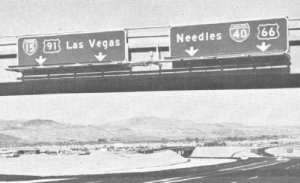
Junction of US91 & US66 in Barstow in 1958.
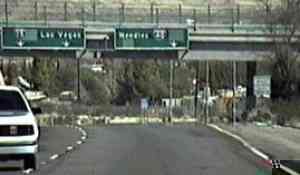
Junction of I15 & I40 in Barstow today. Notice the light green plates covering the old US shields. This is a common occurrence with California's 30-year life span guide signs. (Photo courtesy of Mark Furqueron's Highway Page)

I80/CA17 split in Albany prior to the renumbering of CA17 to I580. This picture was taken sometime in the 1960's. Notice the cosigning of I80 and US40 on the overheads, using the US outline shield. Also, this example shows the modern green signs before reflectorized dots were added to the lettering (and before the reflectorized dots were directly imbedded in the lettering as is practice today). Photo courtesy of Mike Ballard.
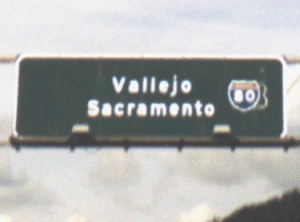
You can see this sign in the picture to the left (it's the one farther up the road in the background). This was taken in 1998 prior to the 80/580 re-alignment -- 580 (old 17) is no longer a left exit. It's the same sign as in 1960, in fact, you can see the old US40 partially covered. Another example of legacy signing that has been covered over and shows the age of signs in use today.
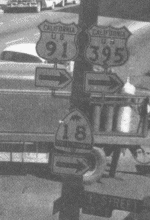
Old style US and State Route shields. City of Colton Circa 1940s

As the interstate system was slowly implemented, many highways were simultaneously signed by their US and Interstate number. This is I80 about 1960. Notice the 99E use of the directional suffix. This was common when a route was split into east and west, or north and south. A few early interstates had this as well, but it was phased out in the 1970s except for one politically-motivated exception.
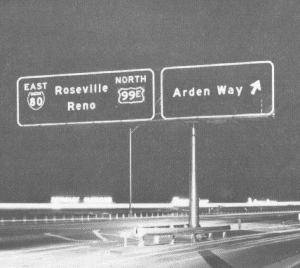
Suffixed US route on an overhead guide sign.

California briefly represented its state routes on signs as white instead of green outline. This may have been during a brief overlap when national standards demanded routes be shown in their actual colors but before CA redesigned their shields to be green. See the picture above for an example of a white state shield. Photo courtesy of Mike Ballard.
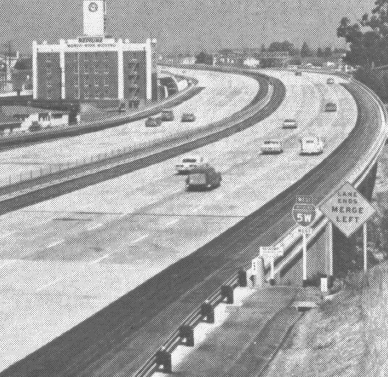
The original Interstate system had a number of suffixed routes. I580 was briefly I5W routed from below Tracy to Oakland, up I80, out I505 and back to I5 north of Sacramento. I5E was to be the current I5. This is the MacArthur Freeway in Oakland after it opened.

This suffixed I-route lasted much longer; into the 1980s. It was replaced by I215. (Photo courtesy of Mark Furqueron's Highway Page)

US routes on overhead signs were gradually changed from green/white outline to solid white. This is the Santa Monica Freeway eastbound at the Harbor Freeway Junction. I need to get a current example of the outlined kind.

This is a sign nearby that was changed to the all-white kind seen today (although US 6 no longer exists on the Harbor Freeway).

Many times routes are moved from arterial streets to newly constructed freeways. In this case, State Route 134 was moved from Colorado Blvd. to the new Ventura Freeway. This is a sign on the newly completed Golden State Freeway in about 1959.
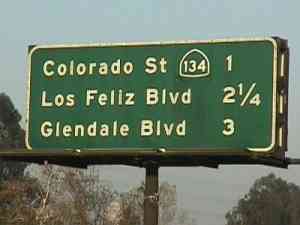
Of course, old signs will show evidence of this move from street to freeway. Recently this green cover fell off, revealing the old CA 134 shield for Colorado Blvd. This was taken in 1998 in Glendale. (Photo courtesy of Mike Ballard's Historic Highways Page)